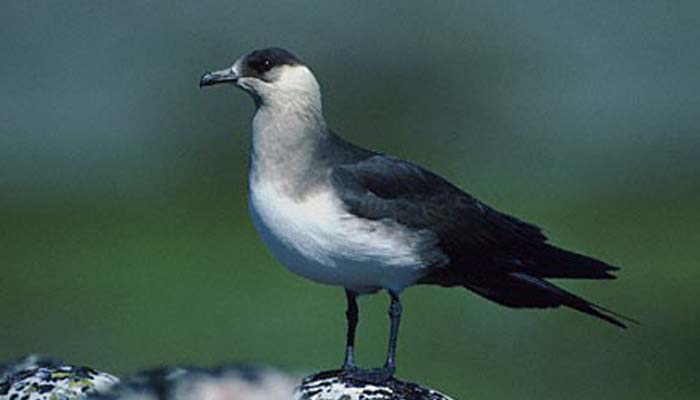
English: Parasitic Jaeger, Arctic Skua
Russian: Короткохвостый поморник
Mongolian: Годон хайлгана, Годон хулгайч цахлай
German: Schmarotzerraubmowe
French: Labbe parasite
Japanese: クロトウゾクカモメ (Kuro-tozoku-kamome)
Body length:
37-44 cm.
Wing span:
108-118 cm.
Breeds
on tundra, coastal moors and barren islands, locally in loose colony; winters
mainly S of the Equator. In Britain fairly common locally in N Scotland. Nest a
shallow depression Often keeps watch from top of island or a moorland ridge.
Identification:
Like a dark gull with pointed wings and fast, flexible, almost falcon-like
flight. At closer range, light primary patches and on adult half-length,
pointed tail projections. In flight, appears to be of Kittiwake size. Wings
long and fairly narrow, ‘hand’ pointed; width of ‘arm’ appears equal to or
slightly less than distance from rear edge of wing to tip of tail (projections
disregarded). Flight lighter than Pomarine’s but beware, may at times show some
weightiness; in strong winds Arctic recalls a Kittiwake in lightness, quick
wingbeats and sudden lunges, whereas Pomarine is decidedly heavier and more
steady, like a large gull. Bill a little finer than on Pomarine. Plumages much
as for Pomarine –thus large variation- but note the following distinctions:
dark cap of adult less black, does not solidly surround gape, and always excludes
a small light patch above base of bill; if breast-band present, usually a dark
ill-defined shade, not coarsely patterned; palest juveniles lighter than
Pomarine, have contrasting light head and neck (finely streaked; discernible at
close range) and often belly, too. Darkest juveniles extremely similar to
darkest Pomarine, most reliably identified by bill size, tail shape and overall
proportions; note also pointed central tail-feathers projecting 1-3cm, forming
tiny ‘double point’ at rear of tail, primary-coverts below lacking pale base
(exceptions: 1 out of 20) and bill generally looking dark, not strikingly
pale-based (tendency to paler base hardly visible beyond 150m).